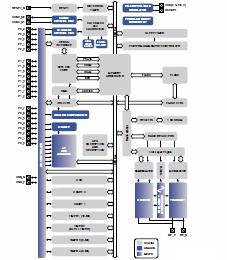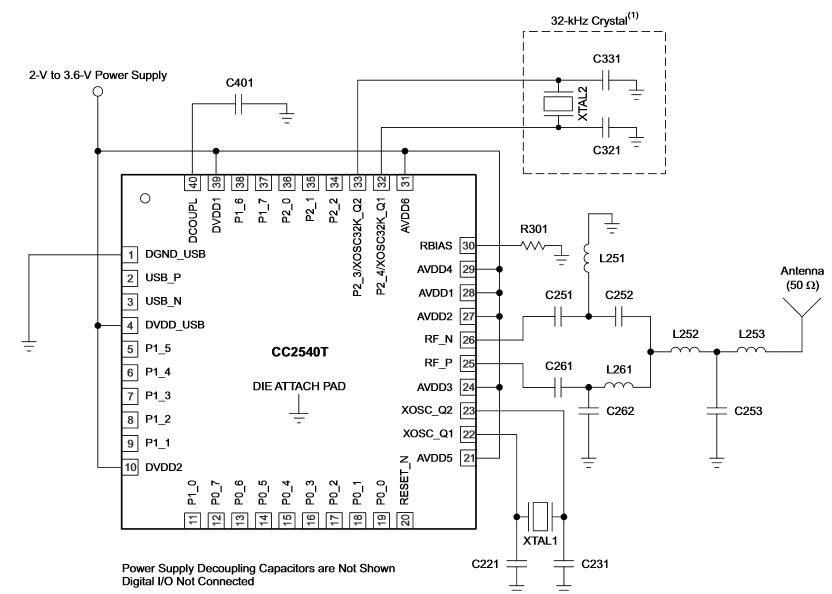This post sponsored by Texas Instruments.
Wireless technology is well accepted by the general public, and there is a growing expectation that most applications will be wireless in the near future. This is not an unrealistic expectation either. With cellular, Wi-Fi®, Bluetooth®, ZigBee®, ANT, 6LoWPAN, and several other wireless protocols either well established, or, just breaking through, the need for physical connectivity may be a thing of the past.
Many eyes are turning toward home energy management, especially thermostats, as the next big wireless trend. Large companies are paying big bucks to acquire startups, as was recently seen in Google’s acquisition of Nest. While thermostats are relatively simple, the wireless connectivity technologies involved — including remote access and personal area networks (PANs) — are what really make wireless thermostats interesting.
And it is not only homes that will be moving from wired to wireless. In almost every facet of daily life, we are poised to create a revolution in nonconnected connectivity. The delineation between humans and machines will blur as wireless technology becomes an extension of humanity. This includes our ability to project our presence at remote locations, as well as the ability to become aggregators for selected data and information.
As “gotta have” apps and gizmos grow in popularity, these devices will open the gate to the ever-present Internet of Things (IoT). For example, once an individual purchases and begins using Bluetooth Smart devices and apps, they may as well add more toys to their collection. This is especially evident as protocols and hardware come virtually free on cell phones, tablets, laptops, and computers. The IoT even extends beyond consumer devices with a variety of applications in the industrial market to provide connectivity to better monitor and control buildings, manufacturing equipment and smart metering.
Industrial brings a new set of required features such as temperature to ensure the device can withstand the harsh environments of a factory floor or outdoor space. Additionally, as the engineers of these next-generation devices, it is important to consider the support, expertise and choices offered by suppliers when selecting partners for designs.
Now that Bluetooth 4.0 comes standard on most phones, tablets, and computers, designers can develop hardware and software apps that extend to the factory floor to better monitor equipment and provide predictive maintenance. Take, for example, the Texas Instruments Bluetooth Smart CC2504T wireless MCU with high temperature. In a 6mm x 6mm package, the 2.4-GHz digital-radio-based embedded device is much more than just a radio peripheral (Fig. 1). Instead, it includes mixed signal functions like 12-bit A/D converters, analog comparators, op amps, an on-chip voltage regulator, and even audio.

Fig. 1: TI’s Bluetooth Smart CC2504T is truly a mixed-signal wireless MCU with a tightly integrated digital radio. (Source: Texas Instruments)
The enhanced 8051-based core processor can run both the Bluetooth low energy stack and user applications. It houses 256K of on-chip flash memory, and 8 Kbytes of static RAM. It also features full-speed USB and AES encryption. Several low-power modes go down as low as 0.4 µA using external interrupts to reawaken the core.
Several choices exist to help with the development process from both third party suppliers as well as from TI. Code development is supported by the IAR Embedded Workbench. TI also offers design kits, evaluation modules, and reference designs to help test, evaluate, experiment, and design your own applications. Very few components are needed to implement the radio part of the design (Fig. 2).

Fig. 2: Very few external components are needed to implement the entire digital radio. Several integrated parts are also available to shrink this design even more. (Source: Texas Instruments)
For example, a reference design for a Bluetooth Smart wireless MCU links to more than a dozen app notes, users guides, and tool choices for both digital, analog, and mixed-signal support. The Bluetooth low energy Light Reference Design is a click away.
CC2540T High Temperature Bluetooth Smart Wireless MCU
For more information about this product, click here.
To request a sample, click here.  To buy now at Mouser, click here.
To buy now at Mouser, click here.
CC2541 SensorTag Development Kit
For more information about this product, click here.
To request a sample, click here.  To buy now at Mouser, click here.
To buy now at Mouser, click here.
CC2592 Range Extender
For more information about this product, click here.
To request a sample, click here.  To buy now at Mouser, click here.
To buy now at Mouser, click here.
Bluetooth and MSP Audio Source reference design
For more information about this product, click here.
To request a sample, click here.  To buy now at Mouser, click here.
To buy now at Mouser, click here.
SimpleLink™ Wi-Fi CC3100 network processor
For more information about this product, click here.
To request a sample, click here.  To buy now at Mouser, click here.
To buy now at Mouser, click here.
SimpleLink Wi-Fi CC3200 wireless MCU
For more information about this product, click here.
To request a sample, click here.  To buy now at Mouser, click here.
To buy now at Mouser, click here.
TI Dual-mode Bluetooth CC256x controller
For more information about this product, click here.
To request a sample, click here.  To buy now at Mouser, click here.
To buy now at Mouser, click here.
Author: Jon Gabay, Hearst Business Media
Advertisement
Learn more about Texas Instruments





